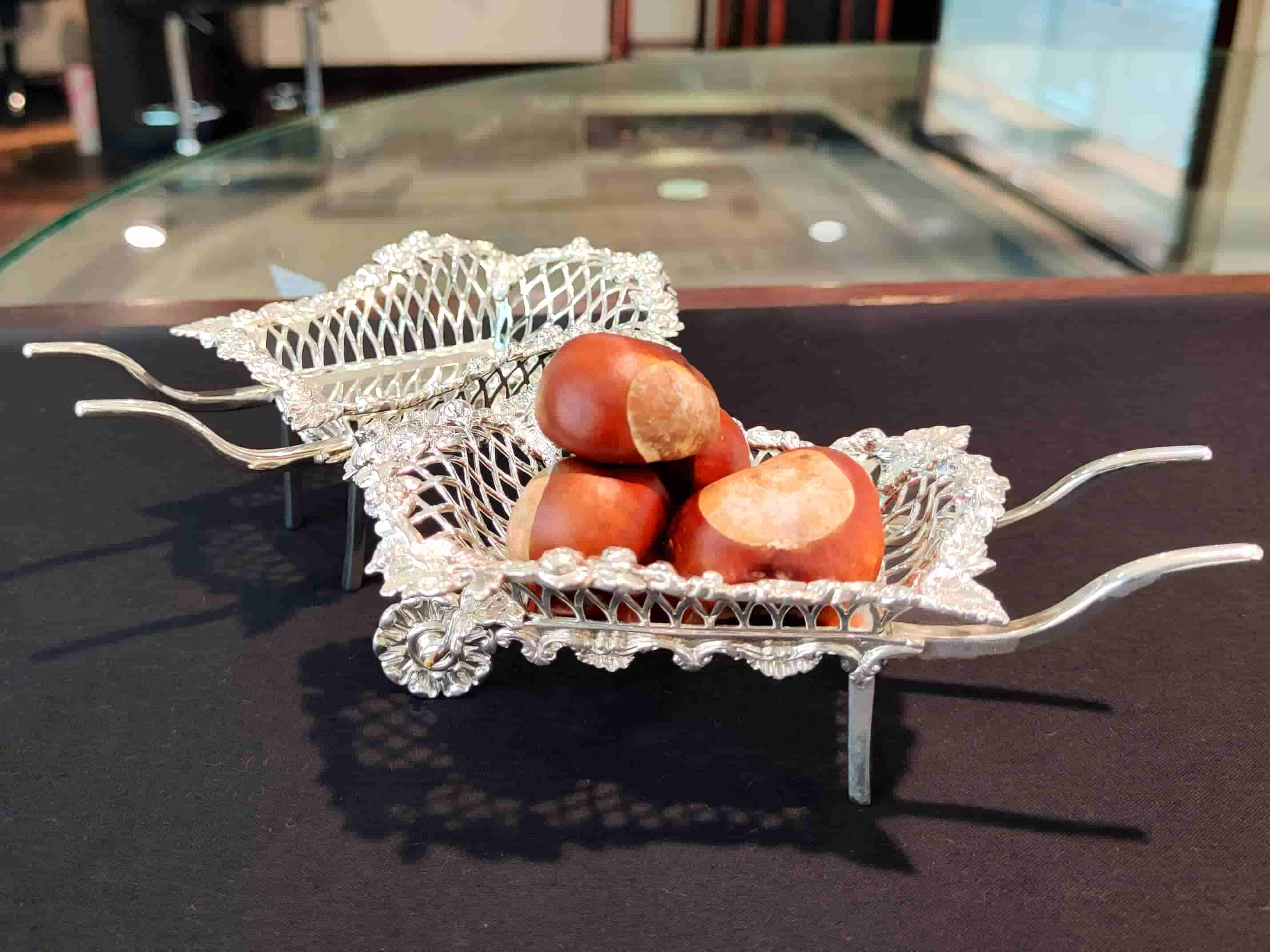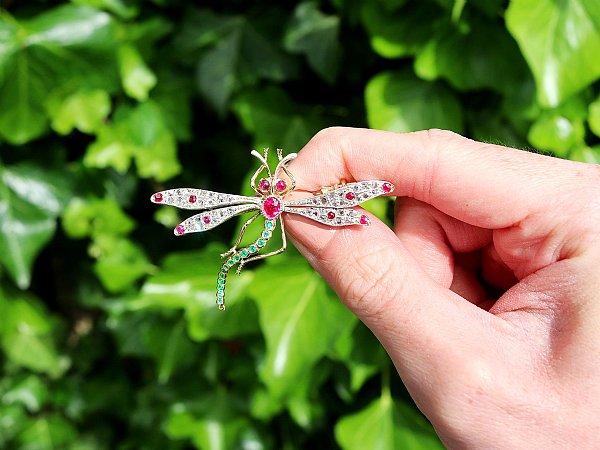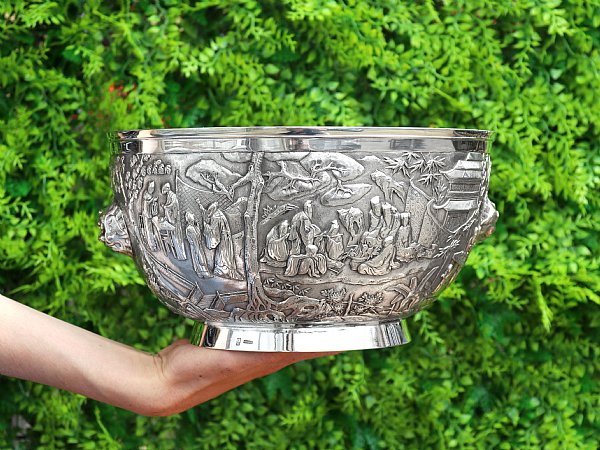Search Results for: '{{searchText}}'
Sorry...
We don't seem to have what you're looking for.
However we do have thousands of magnificent pieces of silver and jewellery available for you to view online. Browse our store using one of these categories.
Please wait for loading data... 
At AC Silver, we are pleased to offer for sale an impressive and large collection of antique sterling silver baskets, all include free and fully insured, global shipping.
Our collection includes large silver antique baskets, which were intended to display cakes, breads or fruits at the dining. Smaller, more delicate silver baskets were created to hold sweets, patisseries and sugar.
Whether you are searching for a grand antique silver basket for display, or a smaller silver handled basket for everyday use. At AC Silver we have pieces suited to all styles and tastes.
Andrew Campbell selects only the finest antique and vintage silver baskets to add to the AC Silver inventory. All silver baskets are in presentation condition and ready for use.

A basket is typically a piece which has a vertical handle, looping from one side of a dish or bowl to the other. Baskets became popular in the Georgian period, and continued to flourish during the Victorian and Edwardian eras.
The reason for this is threefold; firstly, silver baskets are decorative pieces which make excellent centrepieces. During the Georgian, Victorian and Edwardian eras the wealthy and middle classes became enamoured with dinner parties. Displaying silver tableware, services and centrepieces was a means of displaying their wealth and taste.
Secondly, during these dinner parties, the handles of baskets ensured food could be passed around the table by guests rather than being served by staff; especially sharing food- such as bread, fruit, cakes and sweet treats.
Lastly, the more unusual and varied types of dining and serving pieces included on the dinner table, the more cultured and knowledgeable you were perceived to be. Specific items such as grape shears, asparagus tongs, claret jugs, novelty mustard pots and shakers, to name but a few, were created and used during this period; the understanding of such complex etiquette around the dinner table was seen as the height of sophistication.
When silver baskets first appeared around the 17th century, they resembled the original, practical and rudimental woven straw or wooden baskets used in agriculture.
By the late 18th century, under the influence of neo-classical design, baskets were replaced by lighter more delicate forms which were die-stamped and fly-pierced or made from silver wire.
With changing menus and eating habits, not only were silver baskets used to hold bread, but more ornamented baskets, often with swing handles were used from the 19th century to serve cakes, sweetmeats and bon bons.
During the Victorian era in the mid 1800’s, small baskets were used with centrepieces and epergnes to compliment and further ornament designs.
There are many variations and types of antique silver baskets, essentially these differences are distinguished by which item the basket was designed to contain and transport to the dining table. At AC Silver, we are able to offer customers an array of baskets, ranging from flower, sugar, bon bon, cake and fruit.
Bread baskets tend to be a larger type of basket and are often around the same size as flower baskets. When searching for bread baskets, it is important to remember the contemporary term for a bread basket- dish or bowl which holds bread- is not strictly the same definition for an antique bread basket. Usually, a basket will feature a handle, whereas a bread dish will simply have a raised lip, typically surrounding an oval or circular flat plate form.
During the 18th century there was a trend towards pierced bread and cake baskets. This was due to an increase in the amount of pierced sheet silver available at the time. Handles began to be incorporated into the bread basket during the reign of George II, as did feet. Examples from this time were also often decorated with a pattern of wheat ears: our strongest indication of what the baskets were intended for. As the century progressed, bread baskets began to be crafted without feet and in a style which mimicked a wicker basket.
Cake baskets often had a rolled-back rim so both the guests and hosts can see the sweet cakes readily from the table. Decoration of the earliest examples included fruits, foliage, scrolls and eagles. During the 1790s two handled cake baskets became popular.
Cake baskets and fruit baskets are mostly interchangeable, they are generally the same size and shape. However, if the basket is ornamented with fruiting decoration, it is likely the basket was intended for this purpose. Fruit baskets are often deeper than cake, ensuring piled fruit does not spill onto the table.
Sugar baskets are the smallest of antique basket tableware, they were used to hold sugar for tea or sweetening foods. More of a decorative and novelty item, the popularity of these pieces was due to the demand for obscure items of silver tableware.
A bon bon basket/dish is a small vessel used to hold sweets such as after-dinner mints. These typically circular and oval dishes have shallow or pieced decorated borders to allow visibility of sweet wrappers and engaging colours.
The concept of a bon bon dish/basket came to light in the middle of the Victorian era, however they found more popularity in the 20th century due to the availability of silverware to a wider range of classes. The bon bon dish is not to be confused with the Georgian sweet meat dish, which were used at tea time to serve sweetmeats and dried fruits or summer fruits soaked in brandy; thus, were not typically pierced decorated.




